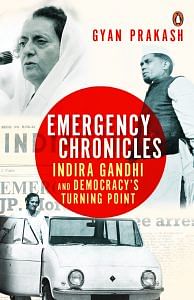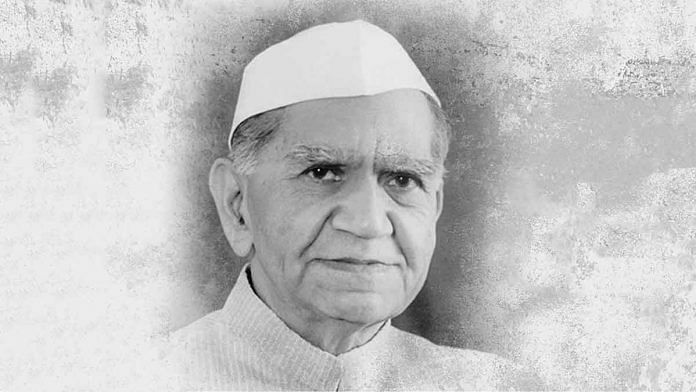New Delhi: Fakhruddin Ali Ahmed was India’s fifth president but he is significant for being the man who signed the declaration of Emergency, which helped then Prime Minister Indira Gandhi unleash her iron-fist reign in 1975.
The Emergency was a time of suppressed civil rights, oppressed opposition and limited legal recourse. The press was muzzled and democracy was a pale shadow of itself.
In the book Emergency Chronicles: Indira Gandhi and Democracy’s Turning Point, historian Gyan Prakash writes how Ahmed’s reservations about the order became inconsequential. He also did not have the benefit of advice of the Council of Ministers — they themselves were unaware of what was happening until the morning Emergency was declared.
On his death anniversary, which falls today, a look at the former President’s life and the night that has had severe repercussions for Indian democracy.
Also read: Indira Gandhi at 100: Why She Still Rules India
The Cambridge alumnus
Ahmed, the second Muslim to become president of India, was born in New Delhi in May 1905. An alumnus of Catherine College of Cambridge University, he studied to become a lawyer and started his practice in the Lahore High Court in 1928.
While in England, Ahmed had met and befriended Jawaharlal Nehru in 1925. Impressed by his friend’s progressive ideas, he eventually joined the Congress in 1931, after his return to India.
A member of the Rajya Sabha from Assam, his ancestral homeland, he also served as Advocate-General of the Government of Assam. In 1966, he joined Indira Gandhi’s cabinet and held several portfolios, including education and irrigation and power. In 1974, she chose him for the presidency. Three years later, he died while still in office on February 11, 1977, after suffering a heart attack.
Not always Indira’s man
In the wake of the Emergency, Ahmed faced criticism. He had held several senior posts in the Congress party and enjoyed close ties with the Nehru-Gandhi family — reasons for which he was perceived as simply giving in to Indira Gandhi’s demands of an Emergency rule. However, in 1976, he apparently raised several objections about Gandhi’s style of governance, according to a report on a US embassy cable accessed by Wikileaks.
The repercussions of the Emergency have had political consequences which reverberate even today with Prime Minister Narendra Modi and BJP using it to criticise Congress on the question of democracy.
Also read: Illustrating the Emergency: The darkest time-line in modern Indian history
The Emergency night
Below is an excerpt from Prakash’s book that narrates what transpired that fateful night.
President Fakhruddin Ali Ahmed summoned his secretary, K. Balachandran, at around 11:15 p.m. on June 25, 1975.
Ten minutes later, Balachandran met the pajama-clad president in the private sitting room of his official residence at Rashtrapati Bhavan. The president handed his secretary a one-page letter from Indira Gandhi marked “Top Secret.” Referring to the prime minister’s discussion with the president earlier that day, the letter said she was in receipt of information that internal disturbances posed an imminent threat to India’s internal security. It requested a proclamation of Emergency under Article 352 (1) if the president was satisfied on this score. She would have preferred to have first consulted the cabinet, but there was no time to lose. Therefore, she was invoking a departure from the Transaction of Business Rules in exercise of her powers under Rule 12 thereof.
The president asked for his aide’s opinion on the letter, which did not have the proposed proclamation attached. Balachandran said that such a proclamation was constitutionally impermissible on more than one ground.
At this, the president said that he wanted to consult the Constitution. Balachandran retreated to his office to locate a copy.
Meanwhile, the deputy secretary in the president’s Secretariat showed up. The two officials launched into a discussion about the constitutionality of the prime minister’s proposal before they returned to President Ahmed with a copy of the Constitution. Balachandran explained that the president’s personal satisfaction that internal disturbances posed a threat to internal security was constitutionally irrelevant. What the Constitution required was the advice of the Council of Ministers.
Balachandran withdrew when the president said he wanted to speak to the prime minister. When he reentered the room ten minutes later, President Ahmed informed him that R.K. Dhawan had come over with a draft Emergency proclamation, which he had signed.
Then the president swallowed a tranquilizer and went to bed.
****
This late-night concern for constitutional propriety is revealing. What we see unfolding in the hunt for a copy of the Constitution, the leafing through of its pages to make sure that the draft proclamation met the letter of the law, is the meticulous process of the paradoxical suspension of the law by law. The substance of the discussion concerns the legality of the procedures to follow in issuing the Emergency proclamation. The political will behind the act goes unmentioned. This is because Article 352 (1) of the Constitution itself had left the judgment of the necessity for the Emergency proclamation outside the law.
The doctrine of necessity regards the judgment of crisis conditions as something that the law itself cannot handle; it is a lacuna in the juridical order that the executive is obligated to remedy. This leaves the sovereign to define the conditions necessitating the suspension of law. Accordingly, the discussion at Rashtrapati Bhavan made no reference to the politics of the Emergency proclamation.

This excerpt from the book Emergency Chronicles: Indira Gandhi and Democracy’s Turning Point by Gyan Prakash has been taken with permission from the publisher Penguin Random House.
(This report has been updated to reflect that Fakhruddin Ali Ahmed joined Indira Gandhi’s cabinet, and not Jawaharlal Nehru’s, in 1966. The error is regretted.)




“He would later join Nehru’s cabinet in 1966.” 1966?
If the water in the bath tub had been a little warmer, even the tranquilliser would not have been required.